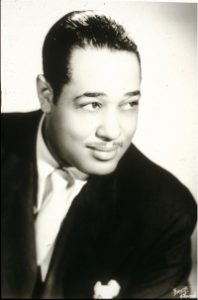Classical music detractors might have you believe that the genre is made up of slow and boring tunes that will put you to sleep. While, sure, there are a fair number of slower tempo pieces including soft lullabies and peaceful preludes, there are also notable quick and lively selections perfect for energizing your workout, keeping you awake, and more. Here is our top 12 list of fast classical music pieces, many of which have become famous through their use in cartoons, TV ads, and more.
Glinka – Ruslan and Lyudmila Overture
The best-known music from Glinka’s opera is this overture, often described as rollicking and wickedly fast.
Chopin – Minute Waltz
The tempo marking of Chopin’s famous “Waltz in D-flat major” is molto vivace (or very lively). Its nickname, the “Minute” was actually intended to describe the piece as a “small” or “miniature” waltz. It was not intended to be played in under a minute. It’s still pretty fast, though.
Vivaldi – “Summer” from The Four Seasons
“The Four Seasons” is the best known of Vivaldi’s works and the Presto movement of Summer is definitely the fastest portion. This portion is intended to evoke images of a storm complete with thunder and hail.
Smetana – “Dance of the Comedians” from The Bartered Bride
The Dance of the Comedians is from Czech composer Smetana’s “The Bartered Bride”. You may recognize it though from the Roadrunner and Wile E Coyote cartoon “Fast and Furry-ous”.
Rimsky Korsakov – Flight of the Bumblebee
“Flight of the Bumblebee” was written as a small orchestral interlude for the opera “The Tale of Tsar Saltan” – music to entertain between acts. Today, it is far more famous as a standalone piece.
Popper – Dance of the Elves
Popper was both a cellist and a composer. His “Elfentanz” (Dance of the Elves) was written along with other short showpieces to highlight the cello’s incredible range and unique sound.
Khachaturian – Sabre Dance
The “Sabre Dance” is by far Khachaturian’s most recognizable work. It’s actually a movement in the final act of his ballet “Gayane”, but it has since been used in movies and even by ice skaters as music for their routines.
Liszt – Gnomenreigen
Part of Liszt’s “Two Concert Etudes”, Gnomenreigen (Dance of the Gnomes) is well-known among pianists for its technical difficulty and fast passages.
Vivaldi – Concerto for 2 Cellos in G Minor
Vivaldi only left one “double” concerto for cellos, but the cadenza-like opening is highly charged and often played very fast.
Paganini – Caprice No 5
You don’t have to search anywhere but Wikipedia to read why this made the list. It’s described as being “known for its incredible speed and extremely high technical difficulty”.
Corelli – Badinerie
Badinerie in French literally means jesting. In music, it generally refers to the quick, light movement in a suite. This selection by Corelli is part of his “Sarabande, Gigue, and Badinerie Suite for Strings”.
Barber – 3rd movement from his Violin Concerto
Barber’s violin concerto has three movements and it’s the last which stands out for its fast tempo. It was designed to show off the more brilliant and virtuosic nature of the violin.




